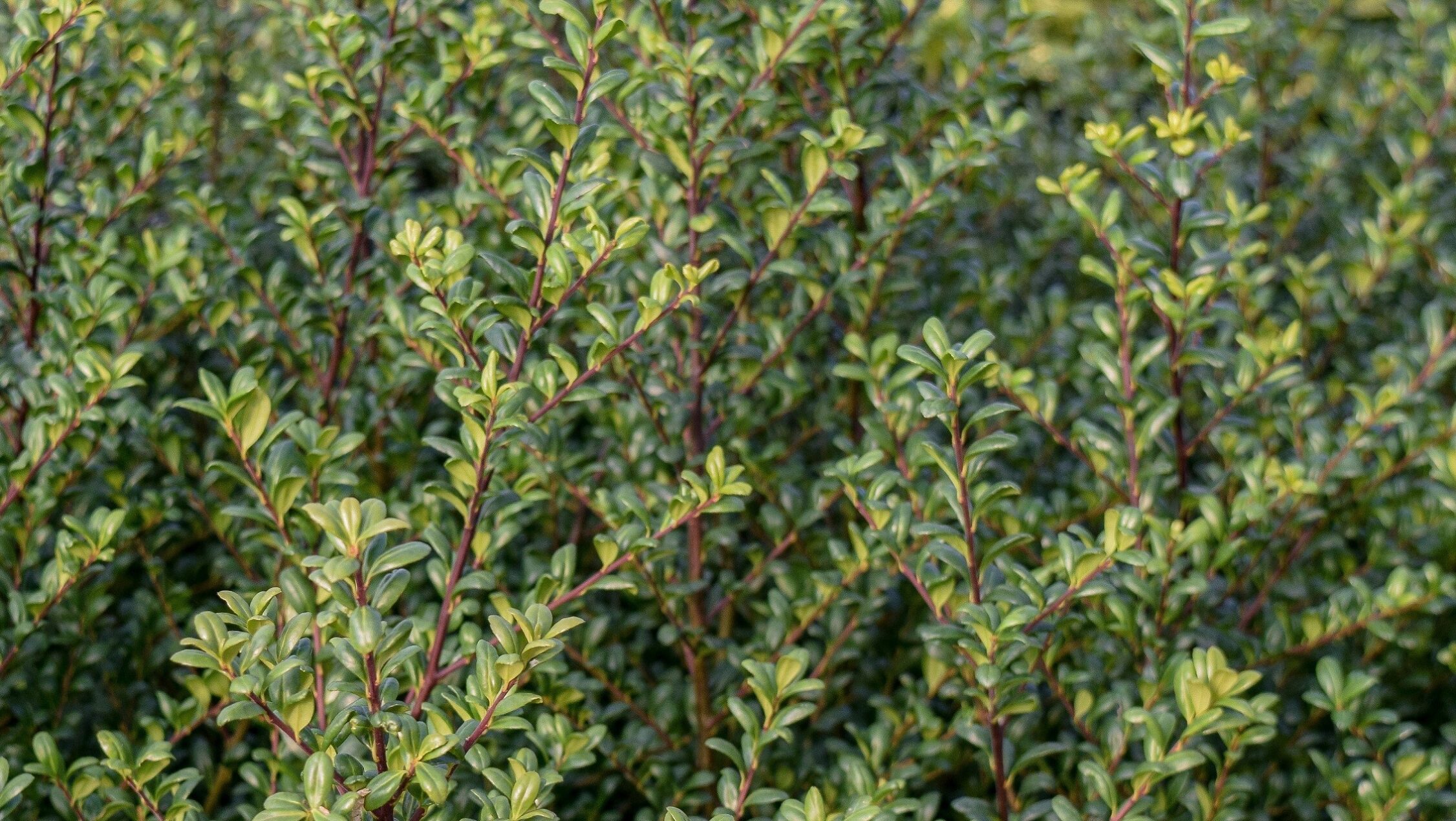Buxus is the highest selling genus for the purpose of hedging due to its dense habit and iconic dark green colour, which provides structure to the traditional English garden. However, it is under attack from two varieties of blight and a Buxus moth, which are now common in many parts of the country and can cause devastation to the plant.
There is understandably a huge amount of interest in Buxus alternatives. It’s difficult to replicate the style and colour of traditional Box, but there are some worthy alternatives that can provide form and colour. We will be looking at alternative species that have a tight, dense structure and can be easily clipped, with a consistent foliage colour that can serve well as a backdrop for other plants.
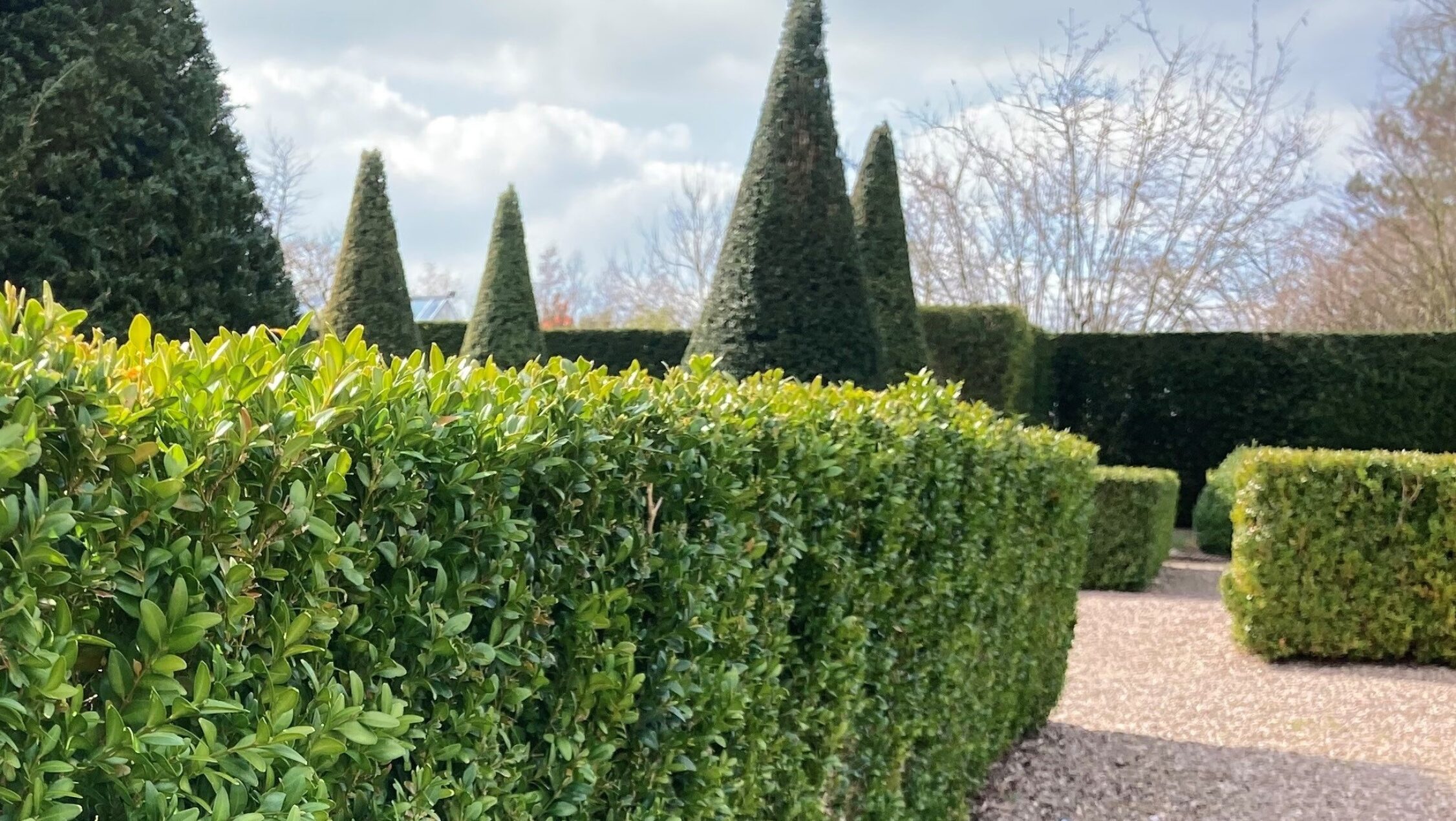
Cultural Care
One reason that Buxus has been the go-to plant for hedging and topiary is that it will grow in almost any condition, one of the key challenges in the search for an alternative has been finding one that will do the same.
Unfortunately, many if not all the alternatives have a limited range in which they thrive, the trick is finding the right option for the environment you are planting in.
Current top choices
These have proven to be popular over the past few years and growing in favour over Buxus.
Euonymus japonicus
Euonymus japonicus ‘Green Rocket’ and Euonymus japonicus ‘Jean Hugues’, are two varieties that we have started to supply as a good alternative and one that can be interchanged to meet demand. They provide the traditional dark green colour associated with Buxus and have a wide tolerance of different soil types.
Euonymus japonicus is hardy and will grow in almost any condition except very wet soil making it a great alternative as a plant.
Best grown as a low hedge like Buxus, but can grow up to 4m given time.
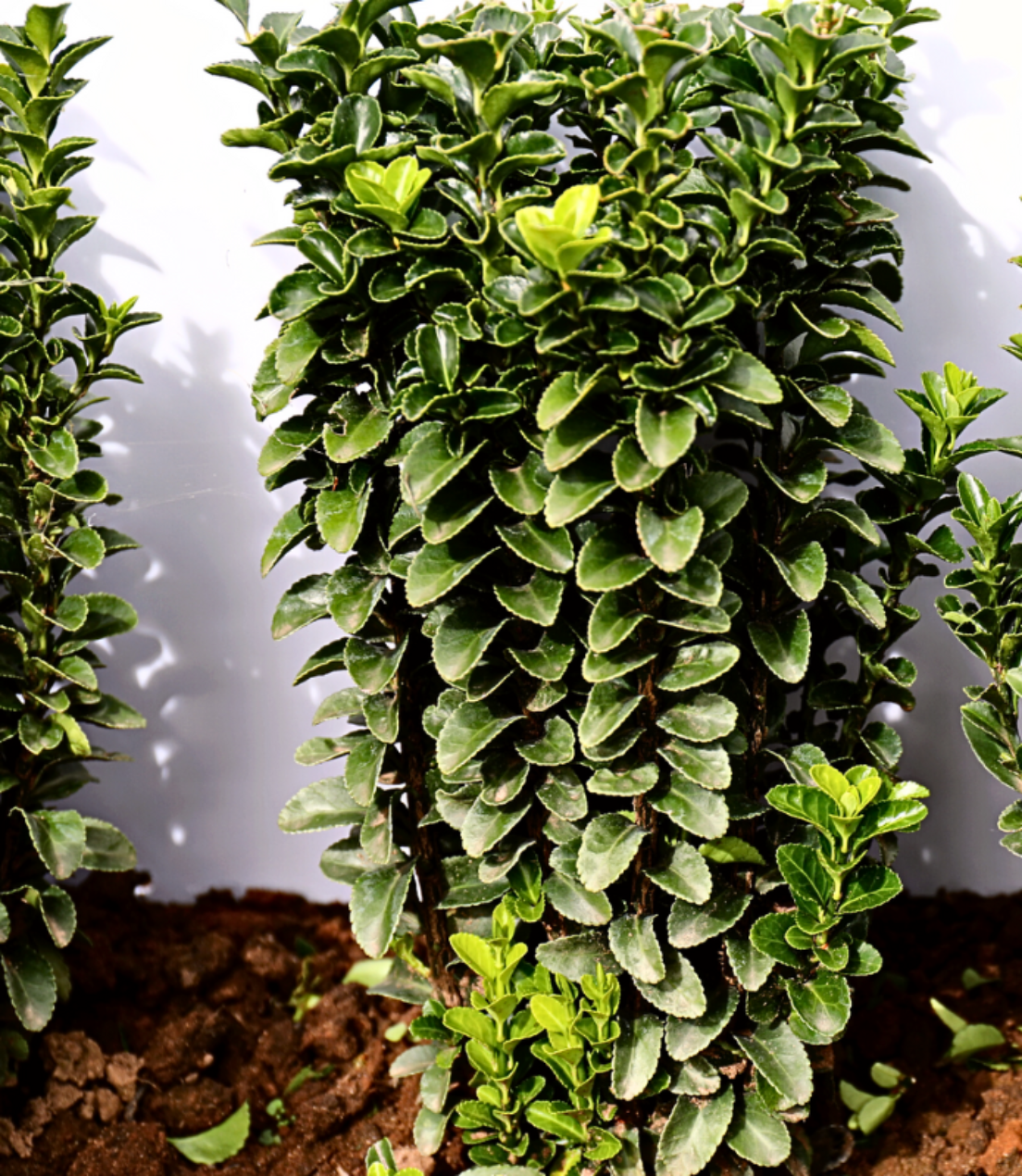
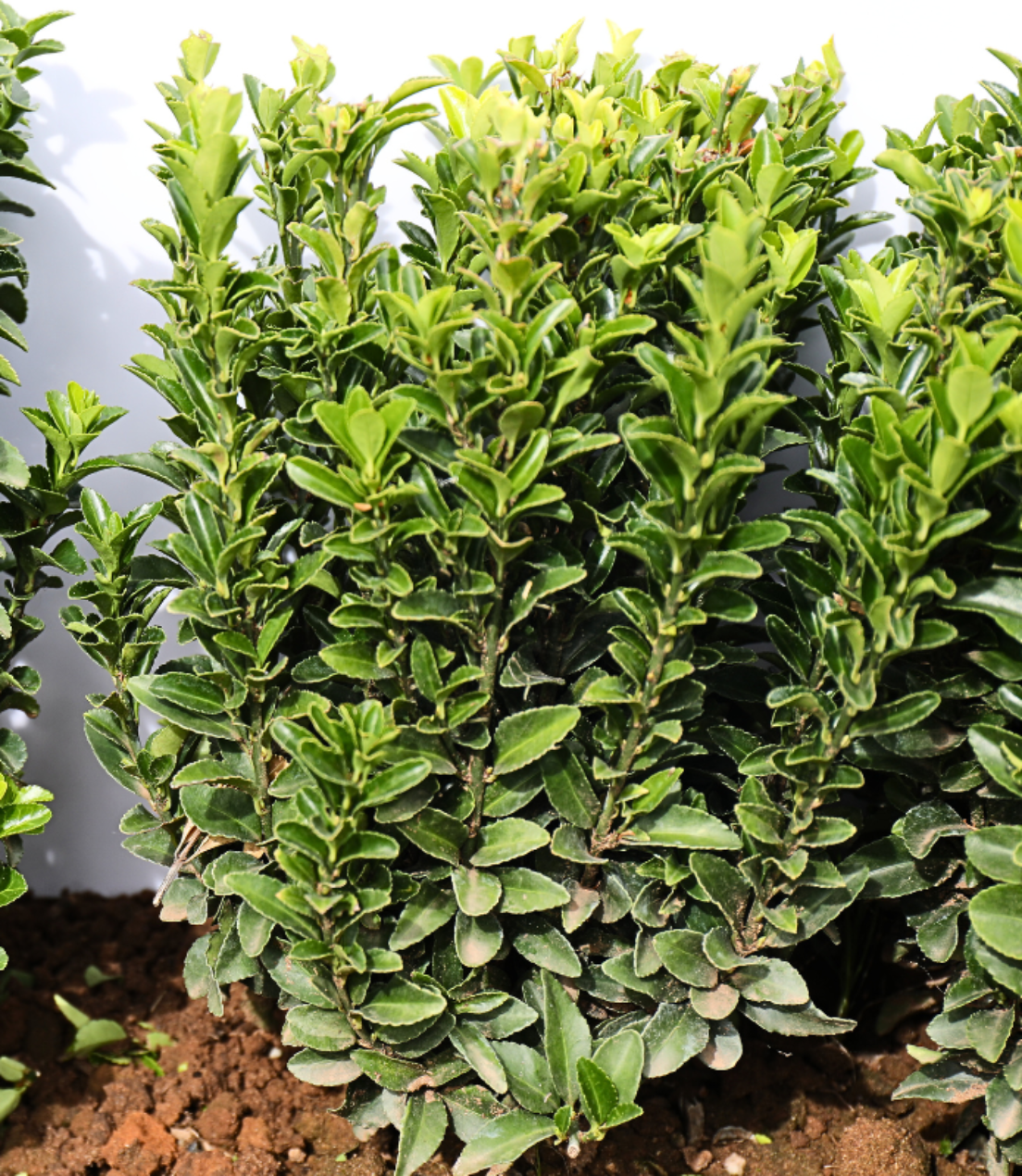
Osmanthus burkwoodii
Another of the lesser known but equally as good looking is Osmanthus burkwoodii. This evergreen shrub has glossy, fine toothed, dark green leaves and possess heavily scented flowers in spring.
Being a larger leaved shrub, it does not form a dense ball or hedge like Buxus until more mature, the leaf colour is a similar green, so the overall effect is maintained.
Growing availability of topiary balls are becoming commercially available, yet very little has been done regarding other topiary shapes such as cones.
Osmanthus grow well in full sun to partial shade and most soils as long as they don’t sit in water-logged soil.

Prunus lusitanica
Prunus lusitanica is another species similar to Osmanthus, traditionally grown as hedging or as shrubs.
Being a larger leaved shrub, it does not form a dense ball or hedge like Buxus until more mature, the leaf colour is a similar green, so the overall effect is maintained.
There is good commercially grown availability of balls, cones and ½ standard lolly pops.
Prunus lusitanica grows well in full sun to partial shade and most soils as long as they don’t sit in water-logged soil.
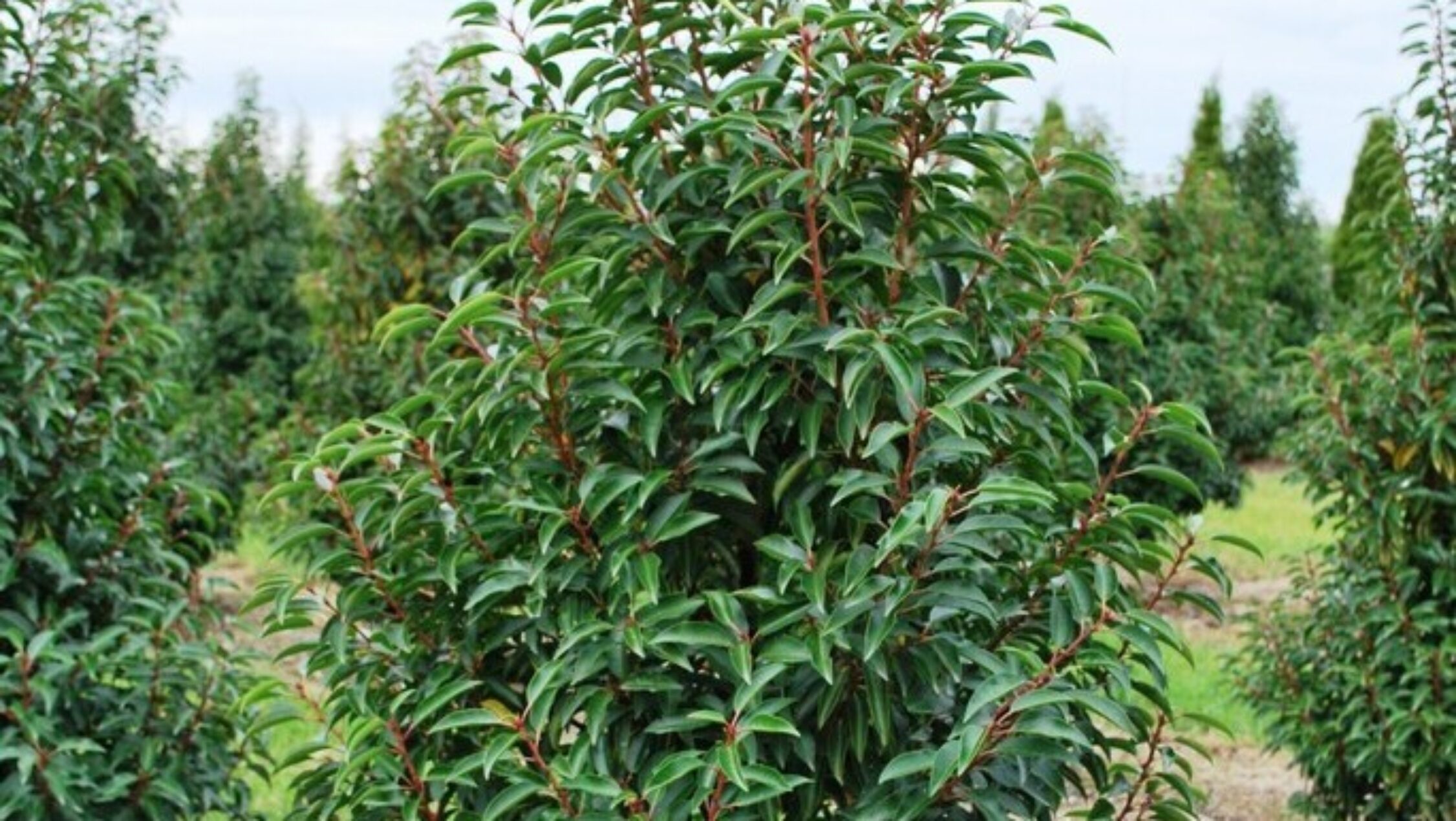
Taxus baccata
For many years Taxus has been the well known rival to Buxus when it comes to topiary and low hedging.
It forms dense shapes and is commercially available in all sizes and forms such as balls, cones and spirals.
However its downfall is its failure to cope with wet soils. Although it can cope with all other conditions thought has to be given to make sure it is suitable.
Taxus can be grown as a low hedge right up to large 3 meter high hedges without any issues and can also be used for very large topiary forms such as balls and cones.
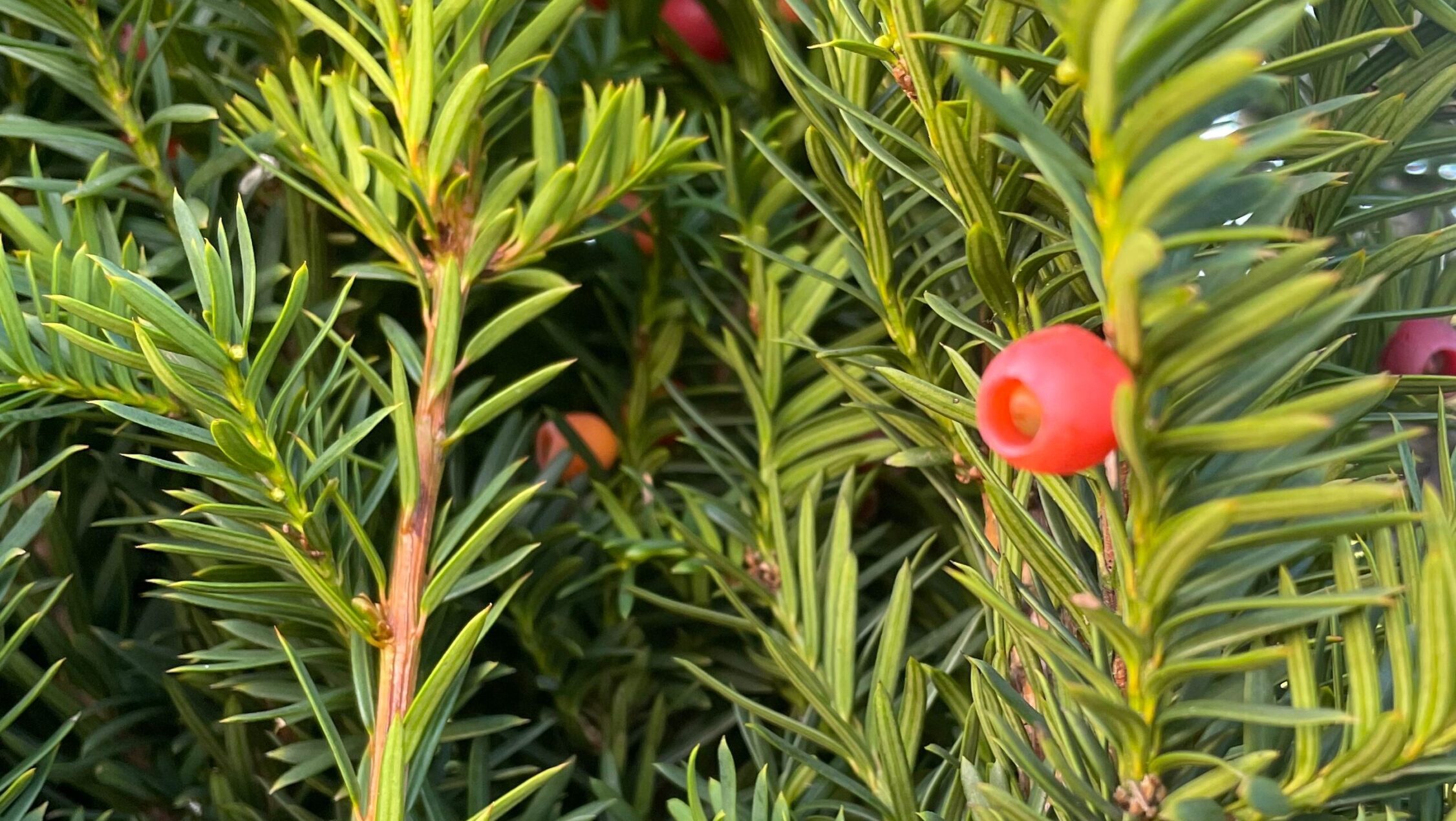
Ilex Crenata
Another of the go to species as a Buxus alternative is Ilex crenata, recently the Viridis team have been favoring Ilex crenata ‘Dark Green’ as this is showing the closest resemblance to Buxus.
Good availability commercially and a great choice when Taxus may not be suitable.
